Spackling is a handy material that people commonly use to fix holes and imperfections in walls. Spackling is amazing for fixing little bumps and holes in wood, making them nice and shiny.
But when it comes to using spackling on wood, things are a little different. Applying spackling on wood may initially seem confusing, but it becomes easy when you understand the basics.
We’ll learn about what spackling is, how it works, and whether or not you can apply it to wood surfaces. We explain the types of spackling available and the situations where it can be a helpful solution. We’ll find out how to complete the work with basic materials you might already have at home.
So, be ready to learn how to make your wood surfaces look brand new again; let’s get started. You’ll be able to learn the basics and make your wood repairs easy. Let’s find out if you can use spackling on wood.
Understanding Spackling
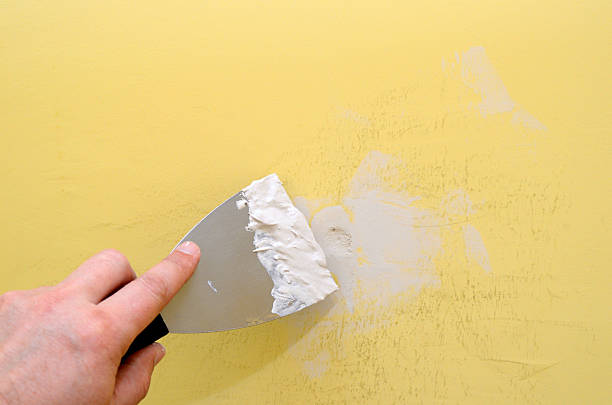
Spackling is a handy tool for fixing walls and ceilings inside your home. It’s made from a polished mixture of things such as gypsum, calcium carbonate, and a bit of water.
When you have holes, dents, or cracks in your walls, you can use spackling on wood to fill them up. After you put it on, spackling dries quickly, and you can easily make it shiny by sanding it.
So, if you accidentally made a hole while moving things around or if there’s a crack in your wall, spackling can help. It makes your walls look great again without much trouble. That’s why a lot of people like using it as an amazing fixer for your home.
Using Spackling on Wood
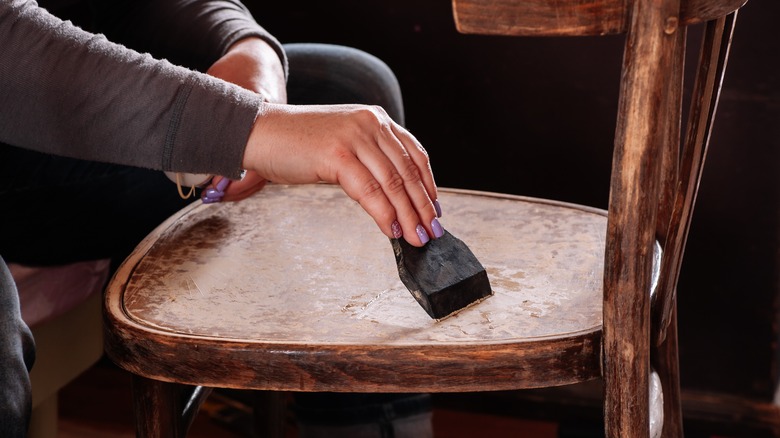
Spackling isn’t meant for wood, but you can use spackling on wood if you’re careful.
Similar Post: Advantages & Disadvantages of Plank Vinyl Flooring
1. Small Repairs
Spackling is a helper for fixing small problems with wood things. It’s perfect for those short tasks, such as covering up holes in nails, fixing little cracks, and smoothing out bumps.
Think about having a wooden wall with little holes from frame nails or screws. Just put some spackling paste on those holes, and they’ll disappear. Nobody will even know they were there.
And if you see short cracks or little dings on your wooden things, don’t worry. Spackling comes to help again. Put some spackling paste on, make it level, wait for it to dry, and you’re all set. Your things will look as good as new. So, when you think that you can use spackling on wood, grab some spackling.
2. Surface Preparation
Before you start fixing wood with spackling, you should get the surface ready. First, clean the spot you want to fix. Remove any dirt, dust, or loose bits of wood. You want the area to be clean.
Next, make the surface shiny by gently sanding the damaged part. Sanding makes it nice and flat without being too rough. By following these steps, you’ll create a perfect base for your spackling job.
When you put spackling on a clean and polished surface, it views better and lasts longer. So, take your time preparing the wood, and your repair will turn out if you use spackling on wood.
3. Compatibility
Spackling works well on plain or painted wood. But it might not stick well to wood with a thick varnish or finish on it. So, before you put spackling on, it’s a good idea to sand or sweep off that thick coating.
This makes the spackling stick better and gives you a smoother result. And to answer the basic question in all, can you use spackling on wood? You need to adhere to cautiousness to its best.
For the best spackling job on wood, start with plain or painted surfaces and remove any heavy finishes first. This simple step will make your spackling project work much better and look nicer.
4. Application
To fix holes or cracks, grab a putty knife or a bendy plastic tool. Get some special filler and spread it over the damaged area until it’s all covered and flat.
If you’re fixing a big hole in wood, take it one step at a time. Let one layer dry before you do the next one. This makes sure your repair is strong and even.
Just follow these simple steps with your handy putty knife or plastic tool, and soon, your walls or wood will look as good as new. It’s an easy way to use spackle on wood, and cracks disappear.
Also Read: How to Fix a Bathroom Faucet Leaking at Base
5. Drying Time
Spackling is like a fast fixer-upper for holes and cracks in walls. It dries quickly, usually in 15-30 minutes. The thicker you put it on, the longer it takes to dry. Once it’s all dry, get some sandpaper and gently rub it.
This makes it look shiny and blends it in with the other can you use, spackling on wood or wall like it was never broken. So, whether you’re fixing a little hole from a nail or a bigger crack, spackling is your speedy helper, and sanding gives it the final touch for a job well done.
6. Paintability
Once the putty is all dried up and you’ve smoothed it out with sandpaper, it’s time to give it a fresh coat of paint. This makes it just like the rest of the wood. But the important part is to use paint that’s good for wood.
This helps protect the wood from water and damage. You might wonder why you bother with painting. Well, besides making it seem nice, painting also keeps the wood safe from getting ruined by water or other harm. So, you can use spackle on wood, grab a paintbrush, and let’s make that patched spot blend right in.
7. Limitations
Spackling is like a handy tool for fixing little things around your home, but it’s not strong. Consider it make-up for your walls or wood, not a construction worker.
It’s good at hiding short holes or cracks to make your walls or wood view nice again. But can you use spackle on wood, like an unsafe table leg or a sagging shelf? Spackling won’t be of much help.
It’s not meant to hold up heavy things or fix serious structural issues. For those big jobs, you should get help from experts, like a carpenter. Carpenters are the real professionals when it comes to making sure your home is safe and strong.
So, spackling is great for little fixes and making things seem better. But if you’ve got big problems, it’s time to call in a carpenter to save the day.
Different Types of Spackle
1. Traditional Spackle
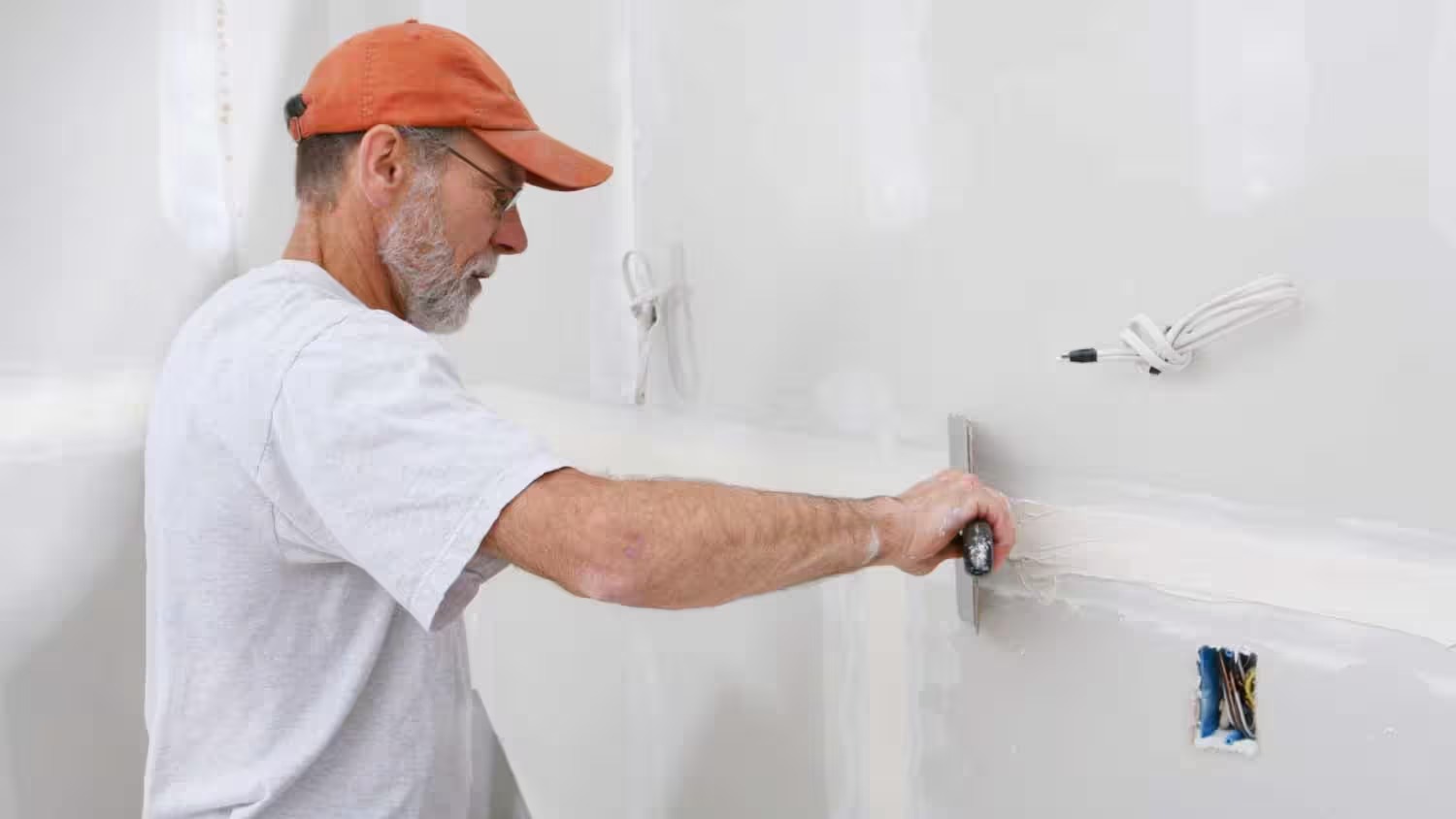
Traditional spackle, or lightweight spackle, is the best choice for fixing things at home. You can buy it in tubs or tubes, and it’s ready to use. It’s easy to work with, and it dries fairly quickly.
It’s perfect for small to medium repairs, like filling in nail holes or short cracks. You can use it on both drywall and plaster walls.
So, whether you’re fixing up a wall or making it shiner, this spackle will help if you use spackling on wood. It’s a must-have for anyone who likes to do DIY home projects. Keep it in your toolbox.
See More: 18 Timeless Mid Century Modern Dining Tables
2. Vinyl Spackle
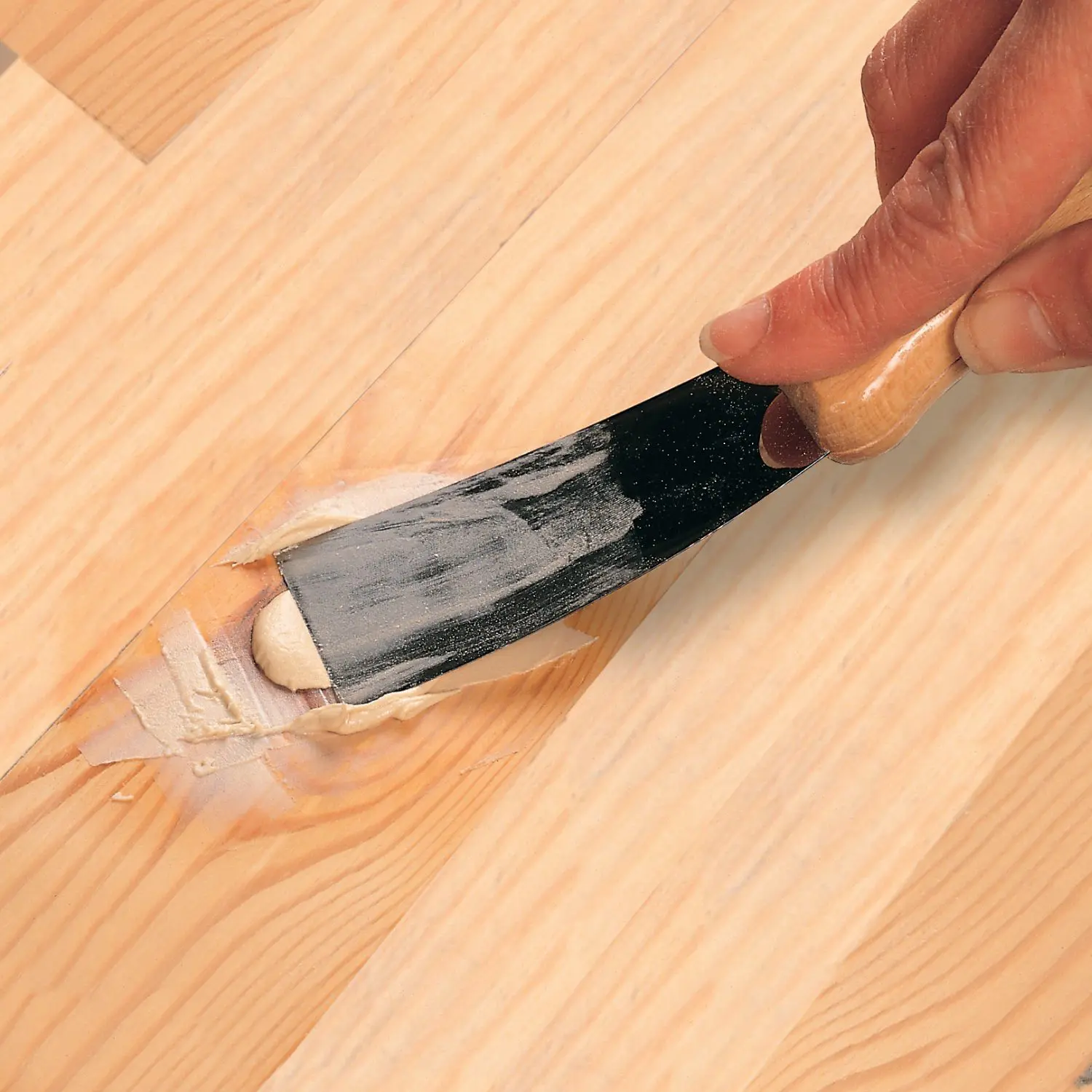
Vinyl spackle is a helpful filler with vinyl in it that dries strong and bendy. It’s perfect for places that move or change in temperature. You can easily paint it and make it even with sandpaper for a neat spot.
It’s great for fixing big holes and cracks, and you can use it on different things like walls, ceilings, and wood. What’s cool about vinyl spackle is its strength and flexibility once it dries.
So, if things in your home shift a bit, this spackle won’t crack. When you’re fixing up your space, you want things to seem good. Vinyl spackle helps answer the question: can you use spackling on wood the best because you can paint right over it.
And when you’re done, your wall or wood will look level and clean. So, whether you’re patching up holes or making your walls perfect, vinyl wall spackle is helpful to have around.
3. Lightweight Joint Compound
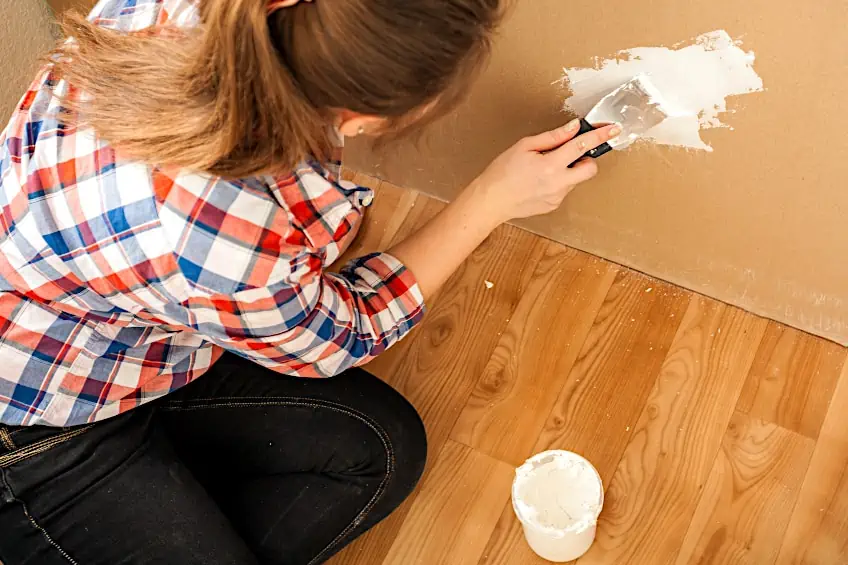
Have you ever heard of the lightweight joint compound? It’s not exactly like Spackle, but it’s pretty awesome. People usually put it on walls made of drywall. You can also use it to fill those little holes and cracks that sometimes appear.
The best thing? It’s easy to sand and makes your wall polished. So, you can use it for big fixes or to give your whole wall a fresh, smooth appearance. It’s like a one-stop solution to make your walls fantastic without any trouble.
Whether you’re covering up a little flaw or giving your room a total makeover, these things can help. So, to answer whether can you use spackling on wood wall project, you now have the perfect answer to your queries.
4. Setting-Type Compound

Professionals like using quick-dry things, often called hot mud, because it dries fast. It comes in a powder that you mix with water. The cool thing is you can use spackle on wood, like 20, 45, or 90 minutes, depending on what you’re doing.
These quick-dry things are for big fixes or when you’re in a hurry. So, if you want your job done quickly and well, go for quick-dry things.
Pros trust it because it saves time and gets the work done fast. No more waiting for things to dry. It works amazingly for anyone looking to speed up their projects without sacrificing quality.
Related: How o Select the Perfect Paint for Your Clay Chiminea
5. Patch Plus Primer

It’s a special mix of two things – spackle and primer – all in one. That means you don’t have to worry about doing a paint primer layer before painting. It’s a time-saver. Using this spackle is a breeze.
Just put it where you need it, and it dries up quickly. You don’t need to be a pro to use it. It’s just perfect for those small fixes and touch-ups that have been bothering you. With this spackle, you can finish the job in no time.
So, if you’re all about saving time and making your home look great without any worry, the Patch Plus Primer spackle is perfect. There is no need for a separate primer coat – this spackle can be used for spackling on wood.
6. Exterior Spackle

When fixing things outside, like your house’s outer walls or other outdoor surfaces, you need something tough, like exterior spackle. It’s like a strong filler that can handle any weather.
Whether it’s sunny or rainy, this special spackle won’t let you down. What’s cool about exterior spackle is it’s really strong. It can use spackling on wood and stay strong. It’s perfect at keeping out water, so it won’t get all mushy or fall apart.
So, if you’ve got outdoor fixes to do, don’t worry about the weather. Just grab some exterior spackle, and you can fix things up and make them view amazing, no matter what the weather is like. It’s a reliable choice for all your outdoor repair jobs.
Conclusion
Can you use spackling on wood? Yes, you can use spackling on wood surfaces. We believe that by far with our detailed explanation, we have justified in answering our queries.
But there are some important things to keep in mind. Spackling is typically used for filling in holes and cracks in walls, but it can also be handy for minor wood repairs.
Before you start spackling wood, ensure the area is clean and free of dust and debris. Then, apply the spackling compound using a putty knife or your fingers.
Smooth it out and let it dry completely. This might take a few hours. Once the spackling is dry, you can sand it to make it shiny and blend it with the surrounding wood.
After that, you can paint or stain the wood to match the rest of your project. So, yes, you can use spackle on wood, but for bigger work, consider other options.
Check This Next: 8 Ways to Get Low-Cost Farmhouse Living Room Ideas


